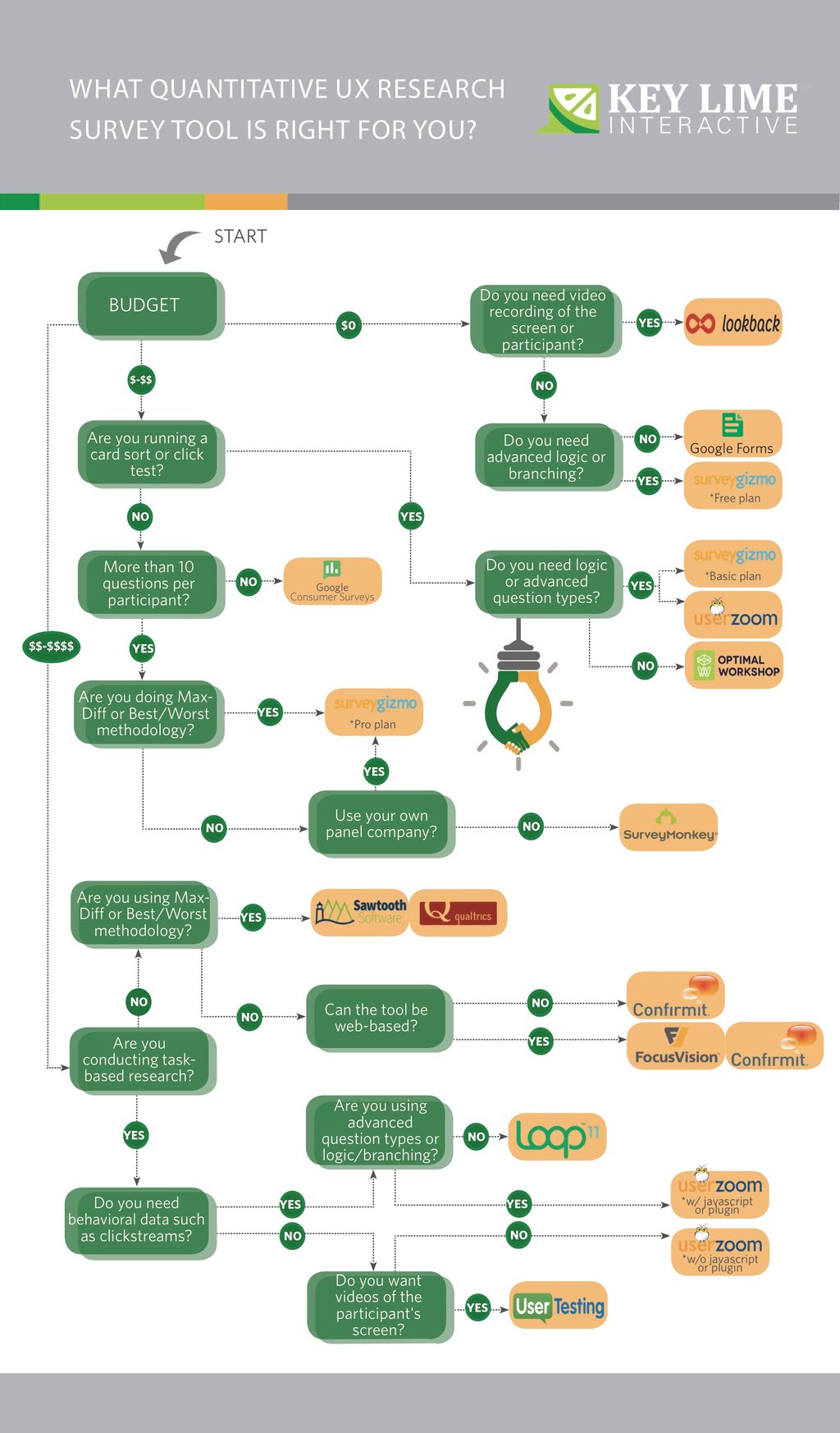

Choosing the proper tool for the task is important in any profession, whether you’re a carpenter, a surgeon, or a UX Researcher. But on a tight budget or a tight schedule, it can be difficult to put aside time to research different offerings, compare pricing and capabilities, and select the right online survey tool. Luckily, at Key Lime Interactive, we’ve spent years working with some of the most popular survey tools on the market, and can help point you in the right direction. To help with this, we’ve created a flow chart that helps point businesses of all sizes in choosing the right survey tool for quantitative ux research. Before we get to the chart itself, let’s talk about a few major considerations to make prior to selecting the right tool.
Budget
In many situations, budget is the key factor in performing a usability test. Since we perform consulting research for clients, this is always top of mind when choosing a tool for a potential study. We want to maximize value for our client, while still meeting all the requirements for the study itself. While prices can range from free, to licenses of tens thousands of dollars a year, this is one of the most important things to determine before looking into tool availability. Do you have no budget for a tool? If yes, you’re limited in what you can deliver, but there are plenty of options on the market for you. Do you have the ability to spend up to $2,000 on a tool, but would prefer to keep costs as low as possible? This opens more options, but can limit you for some of the more expensive licenses.
Methodology
Methodology is another limiting factor in tool selection. Many of the tools listed in this chart overlap in their offered methodologies, but offering an option does not mean that a tool is the best for that methodology. For instance, Sawtooth Software provides a strong MaxDiff tool complete with a Bayesian average of the results, and the ability to see ranking results in percentages as well. SurveyGizmo also offers the Bayesian average, but not the ability to see results in percentages. In the chart below, we will point to the most robust tool for the job, even if multiple tools have the same methodology offering.
Expected Output
What kind of data do you want at the end of the study? Do you want to be able to splice participant videos of an app or site for clips? Do you want clickstreams or a heat map analysis from users on a live site? Or do you prefer open-ended responses to a few key questions? Deciding on the proper data to answer your questions will go a long way towards choosing the right online tool for your quantitative research.
These are some, but not all of the key questions we’ve asked ourselves to put together this chart. A few disclaimers before viewing the chart:
- These results are based on experience, so your mileage may vary. We have done our best to eschew opinion and work based on the known and listed capabilities of each tool.
- We are not working with any online tool providers to put this together; all opinions are our own.
- There are many tools that didn’t make the cut here. That doesn’t mean they’re not good tools, only that we don’t find them to be the best for the particular price/methodology.
- We haven’t used every tool on the market, but we believe strongly that the listed tools will meet your needs for that particular type of research.
- This chart starts with budget as the main factor, but we will explore more potential factors including learnability, training, and more in the upcoming webinar.

Now that you've decided on the right survey tool for your next user experience research study, learn how to plan for a quantitative UX competitive benchmark study.
READ MORE: Participatory Design: Getting Started, Planning a Better Usability Study, 5 Tips for Working With Panel Companies in Quantitative Research, What's Your Excuse For Not Testing User Experience?, Our Researchers Can Join Your Team, Getting Started with Customer Journey Mapping











Comments
Add Comment